2005 年福建厦门大学英语语言文学考研真题
Write down your answers to all the questions in this test in separate blank answer
sheets provided at your test center.
Part One Reading Comprehension 70 points
Directions: Each passage is followed by questions based on its content. After reading
the passage, choose the best answer to each question. Answer all questions following
the passage on the basis of what is stated or implied in that passage.
Passage 1
The recent change to all-volunteer armed forces in the United States will eventually
produce a gradual increase in the proportion of women in the armed forces and in
the variety of women's assignments, but probably not the dramatic gains for women
that might have been expected. This is so even though the armed forces operate in
an ethos of institutional change oriented toward occupational equality and under
the federal sanction of equal pay for equal work. The difficulty is that women are
unlikely to be trained for any direct combat operations. A significant portion of
the larger society remains uncomfortable as yet with extending equality in this
direction. Therefore, for women in the military, the search for equality will still
be based on functional equivalence, not identity or even similarity of task.
Opportunities seem certain to arise. The growing emphasis on deterrence is bound
to offer increasing scope for women to become involved in novel types of non-combat
military assignments.
1.The primary purpose of the passage is to
(A) present an overview of the different types of assignments available to women
in the new United States all-volunteer armed forces
(B) present a reasoned prognosis of the status of women in the new United States
all-volunteer armed forces
(C) present the new United States all-volunteer armed forces as a model case of equal
employment policies in action
(D) analyze the use of functional equivalence as a substitute for occupational
equality in the new United States all-volunteer armed forces
�
2.According to the passage, despite the United States armed forces' commitment to
occupational equality for women in the military, certain other factors preclude
women's
(A) receiving equal pay for equal work
(B) having access to positions of responsibility at most levels
(C) drawing assignments from a wider range of assignments than before
(D) benefiting from opportunities arising from new non-combat functions
3.The passage implies that which of the following is a factor conducive to a more
equitable representation of women in the United States armed forces than has existed
in the past?
(A) The all-volunteer character of the present armed forces
(B) The past service records of women who had assignments functionally equivalent
to men's assignments
(C) The level of awareness on the part of the larger society of military issues
(D) A decline in the proportion of deterrence oriented non-combat assignments
4.The "dramatic gains for women" (line 2) and the attitude, as described in lines
11-12, of a "significant portion of the larger society" are logically related to
each other inasmuch as the author puts forward the latter as
(A) a public response to achievement of the former
(B) the major reason for absence of the former
(C) a precondition for any prospect of achieving the former
(D) a catalyst for a further extension of the former
Passage 2
Of the thousands of specimens of meteorites found on Earth and known to science,
only about 100 are igneous; that is, they have undergone melting by volcanic action
at some time since the planets were first formed. These igneous meteorites are known
as achondrites because they lack chondrules-small stony spherules found in the
thousands of meteorites (called "chondrites") composed primarily of unaltered
�
minerals
that condensed from dust and gas at the origin of the solar system. Achondrites are
the only known samples of volcanic rocks originating outside the Earth-Moon system.
Most are thought to have been dislodged by interbody impact from asteroids, with
diameters of from 10 to 500 kilometers, in solar orbit between Mars and Jupiter.
Shergottites, the name given to three anomalous achondrites so far discovered on
Earth, present scientists with a genuine enigma. Shergottites crystallized from
molten rock less than 1.1 billion years ago (some 3.5 billion years later than typical
achondrites) and were presumably ejected into space when an object impacted on a
body similar in chemical composition to Earth.
While most meteorites appear to derive from comparatively small bodies, shergottites
exhibit properties that indicate that their source was a large planet, conceivably
Mars. In order to account for such an unlikely source, some unusual factor must be
invoked, because the impact needed to accelerate a fragment of rock to escape the
gravitational field of a body even as small as the Moon is so great that no meteorites
of lunar origin have been discovered.
While some scientists speculate that shergottites derive from Io (a volcanically
active moon of Jupiter), recent measurements suggest that since Io's surface is rich
in sulfur and sodium, the chemical composition of its volcanic products would
probably be unlike that of the shergottites. Moreover, any fragments dislodged from
Io by interbody impact would be unlikely to escape the gravitational pull of Jupiter.
The only other logical source of shergottites is Mars. Space-probe photographs
indicate the existence of giant volcanoes on the Martian surface. From the small
number of impact craters that appear on Martian lava flows, one can estimate that
the planet was volcanically active as recently as a half-billion years ago-and may
be active today. The great objection to the Martian origin of shergottites is the
absence of lunar meteorites on Earth. An impact capable of ejecting a fragment of
the Martian surface into an Earth-intersecting orbit is even less probable than such
an event on the Moon, in view of the Moon's smaller size and closer proximity to
Earth. A recent study suggests, however, that permafrost ices below the surface of
Mars may have altered the effects of impact on it. If the ices had been rapidly
vaporized by an impacting object, the expanding gases might have helped the ejected
fragments reach escape velocity. Finally, analyses performed by space probes show
a
remarkable chemical similarity between Martian soil and the shergottites.
5.The passage implies which of the following about shergottites?
�
I.They are products of volcanic activity.
II.They derive from a planet larger than Earth.
III.They come from a planetary body with a chemical composition similar to that of
Io.
(A) I only
(B) II only
(C) I and II only
(D) II and III only
6.According to the passage, a meteorite discovered on Earth is unlikely to have come
from a large planet for which of the following reasons?
(A) There are fewer large planets in the solar system than there are asteroids.
(B) Most large planets have been volcanically inactive for more than a billion years.
(C) The gravitational pull of a large planet would probably prohibit fragments from
escaping its orbit.
(D) There are no chondrites occurring naturally on Earth and probably none on other
large planets.
7.The passage suggests that the age of shergottites is probably
(A) still entirely undetermined
(B) less than that of most other achondrites
(C) about 3.5 billion years
(D) the same as that of typical achondrites
8.According to the passage, the presence of chondrules in a meteorite indicates that
the meteorite
(A) has probably come from Mars
(B) is older than the solar system itself
�
(C) has not been melted since the solar system formed
(D) is certainly less than 4 billion years old
9.The passage provides information to answer which of the following questions?
(A) What is the precise age of the solar system?
(B) How did shergottites get their name?
(C) What are the chemical properties shared by shergottites and Martian soils?
(D) What is a major feature of the Martian surface?
10.It can be inferred from the passage that each of the following is a consideration
in determining whether a particular planet is a possible source of shergottites that
have been discovered on Earth EXCEPT the
(A) planet's size
(B) planet's distance from Earth
(C) strength of the planet's field of gravity
(D) proximity of the planet to its moons
11.It can be inferred from the passage that most mete-orites found on Earth contain
which of the following?
(A) Crystals
(B) Chondrules
(C) Metals
(D) Sodium
Passage 3
The transplantation of organs from one individual to another normally involves two
major problems: organ rejection is likely unless the transplantation antigens of
both individuals are nearly identical, and (2) the introduction of any unmatched
transplantation antigens induces the development by the recipient of donor-specific
lymphocytes that will produce violent rejection of further transplantations from
�
that donor. However, we have found that among many strains of rats these “normal”
rules of transplantation are not obeyed by liver transplants. Not only are liver
transplants never rejected, but they even induce a state of donor-specific
unresponsiveness in which subsequent transplants of other organs, such as skin, from
that donor are accepted permanently. Our hypothesis is that (1) many strains of rats
simply cannot mount a sufficiently vigorous destructive immune-response (using
lymphocytes) to outstrip the liver's relatively great capacity to protect itself
from immune-response damage and that (2) the systemic unresponsiveness observed is
due to concentration of the recipient's donor-specific lymphocytes at the site of
the liver transplant.
12.The primary purpose of the passage is to treat the accepted generalizations about
organ transplantation in which of the following ways?
(A) Explicate their main features
(B) Suggest an alternative to them
(C) Examine their virtues and limitations
(D) Criticize the major evidence used to support them
13.It can be inferred from the passage that the author believes that an important
difference among strains of rats is the
(A) size of their livers
(B) constitution of their skin
(C) strength of their immune-response reactions
(D) sensitivity of their antigens
14.According to the hypothesis of the author, after a successful liver transplant,
the reason that rats do not reject further transplants of other organs from the same
donor is that the
(A) transplantation antigens of the donor and the recipient become matched
(B) lymphocytes of the recipient are weakened by the activity of the transplanted
liver
(C) subsequently transplanted organ is able to repair the damage caused by the
recipient's immune-response reaction
�
(D) transplanted liver continues to be the primary locus for the recipient's
immune-response reaction
15.Which of the following new findings about strains of rats that do not normally
reject liver transplants if true, would support the authors' hypothesis?
I.Stomach transplants are accepted by the recipients in all cases.
II.Increasing the strength of the recipient's immune-response reaction can induce
liver-transplant rejection.
III.Organs from any other donor can be transplanted without rejection after liver
transplantation.
IV.Preventing lymphocytes from being concentrated at the liver transplant produces
acceptance of skin transplants.
(A) II only (B) I and III only
(C) II and IV only
(D) I, II, and III only
Passage 4
Practically speaking, the artistic maturing of the cinema was the single-handed
achievement of David W. Griffith (1875-1948) . Before Griffith, photography in
dramatic films consisted of little more than placing the actors before a stationary
camera and showing them in full length as they would have appeared on stage. From
the beginning of his career as a director, however, Griffith, because of his love
of Victorian painting, employed composition. He conceived of the camera image as
having a foreground and a rear ground, as well as the middle distance preferred by
most directors. By 1910 he was using close-ups to reveal significant details of the
scene or of the acting and extreme long shots to achieve a sense of spectacle and
distance. His appreciation of the camera's possibilities produced novel dramatic
effects. By splitting an event into fragments and recording each from the most
suitable camera position, he could significantly vary the emphasis from camera shot
to camera shot.
Griffith also achieved dramatic effects by means of creative editing. By juxtaposing
images and varying the speed and rhythm of their presentation, he could control the
dramatic intensity of the events as the story progressed. Despite the reluctance
of his producers, who feared that the public would not be able to follow a plot that
was made up of such juxtaposed images, Griffith persisted, and experimented as well
with other elements of cinematic syntax that have become standard ever since. These
�
included the flashback, permitting broad psychological and emotional exploration
as well as narrative that was not chronological, and the crosscut between two
parallel actions to heighten suspense and excitement. In thus exploiting fully the
possibilities of editing, Griffith transposed devices of the Victorian novel to film
and gave film mastery of time as well as space.
Besides developing the cinema's language, Griffith immensely broadened its range
and treatment of subjects. His early output was remarkably eclectic: it included
not only the standard comedies, melodramas, westerns, and thrillers, but also such
novelties as adaptations from Browning and Tennyson, and treatments of social issues.
As his successes mounted, his ambitions grew, and with them the whole of American
cinema. When he remade Enoch Arden in 1911, he insisted that a subject of such
importance could not be treated in the then conventional length of one reel.
Griffith's introduction of the American-made multireel picture began an immense
revolution. Two years later, Judith of Bethulia, an elaborate historic philosophical
spectacle, reached the unprecedented length of four reels, or one hour's running
time. From our contemporary viewpoint, the pretensions of this film may seem a trifle
ludicrous, but at the time it provoked endless debate and discussion and gave a new
intellectual respectability to the cinema.
16.The primary purpose of the passage is to
(A) discuss the importance of Griffith to the development of the cinema
(B) describe the impact on cinema of the flashback and other editing innovations
(C) deplore the state of American cinema before the advent of Griffith
(D) analyze the changes in the cinema wrought by the introduction of the multireel
film
17.The author suggests that Griffith's film innovations had a direct effect on all
of the following EXCEPT
(A) film editing
(B) camera work
(C) scene composing
(D) sound editing
18. It can be inferred from the passage that before 1910 the normal running time
of a film was
(A) 15 minutes or less
(B) between 15 and 30 minutes
�
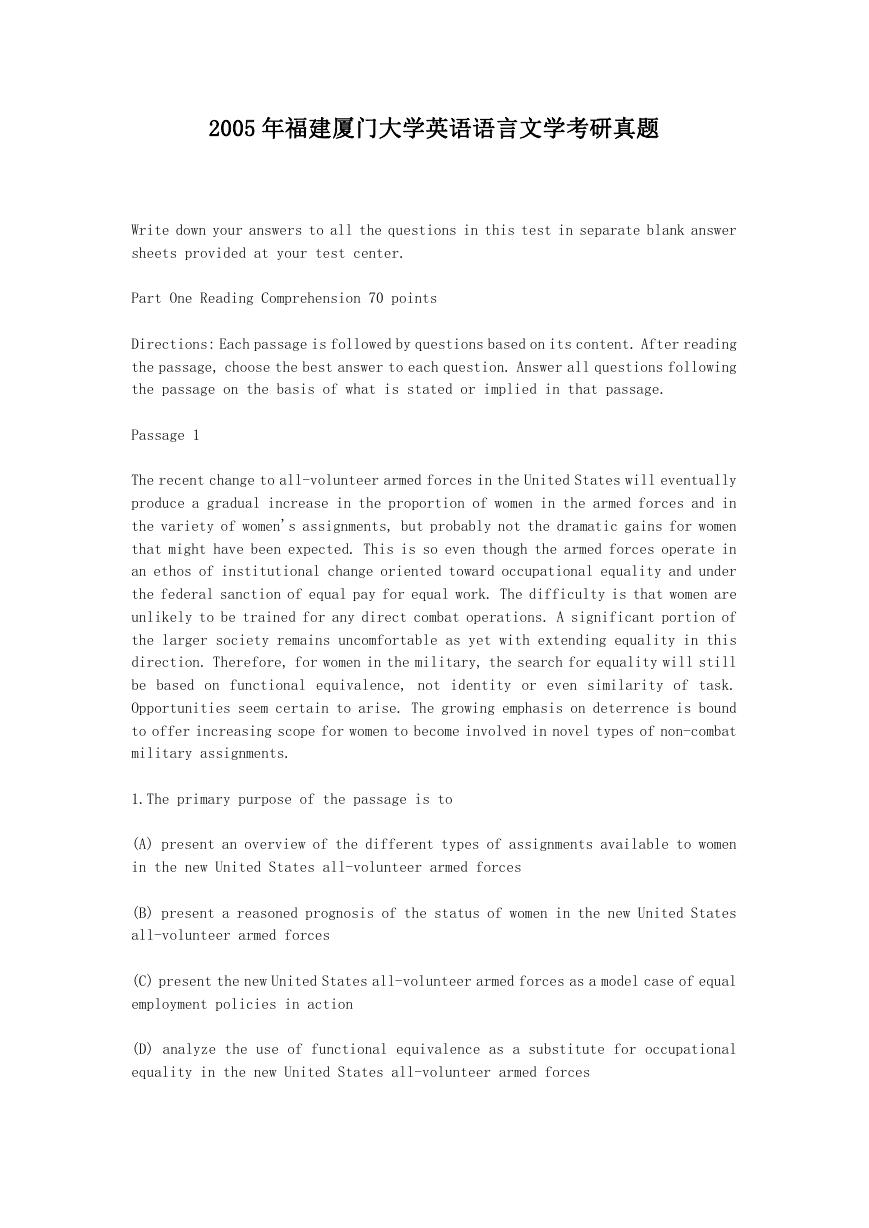

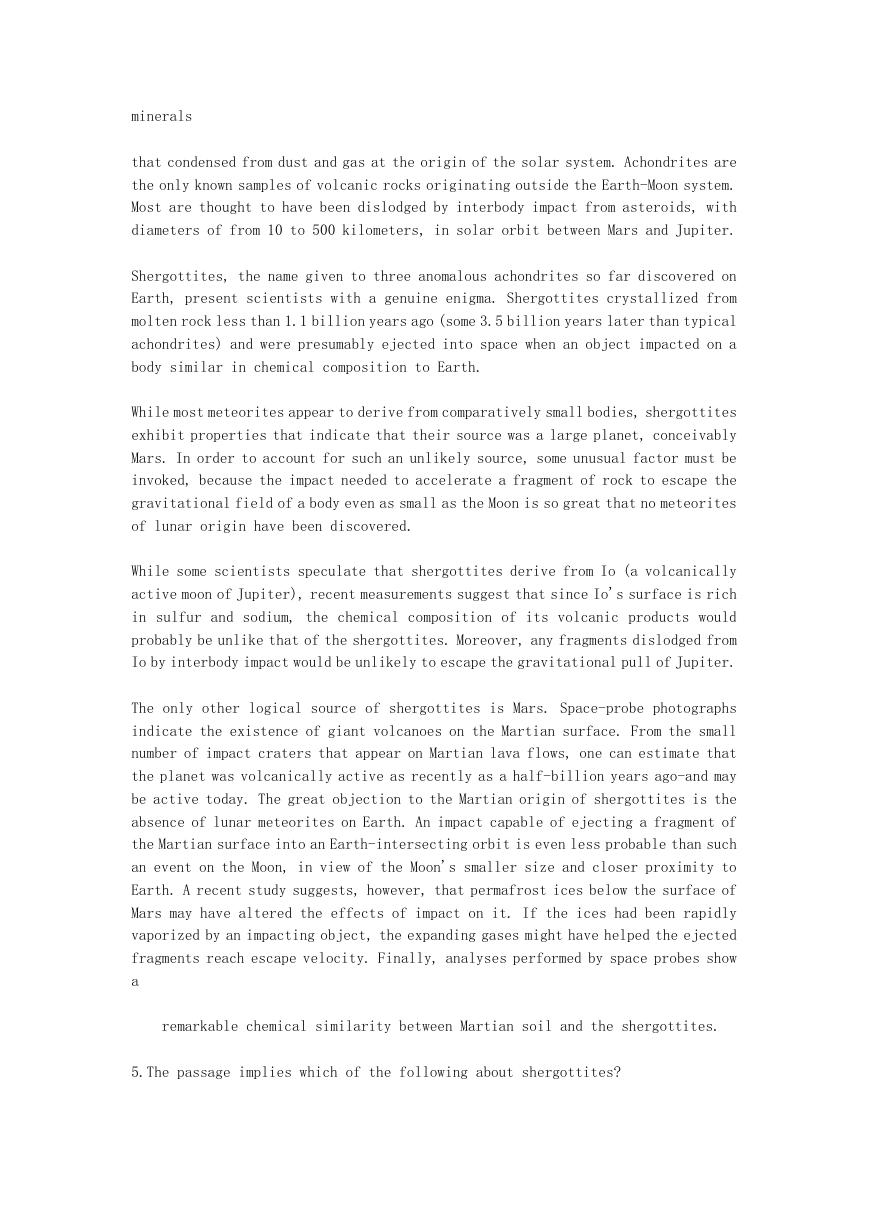
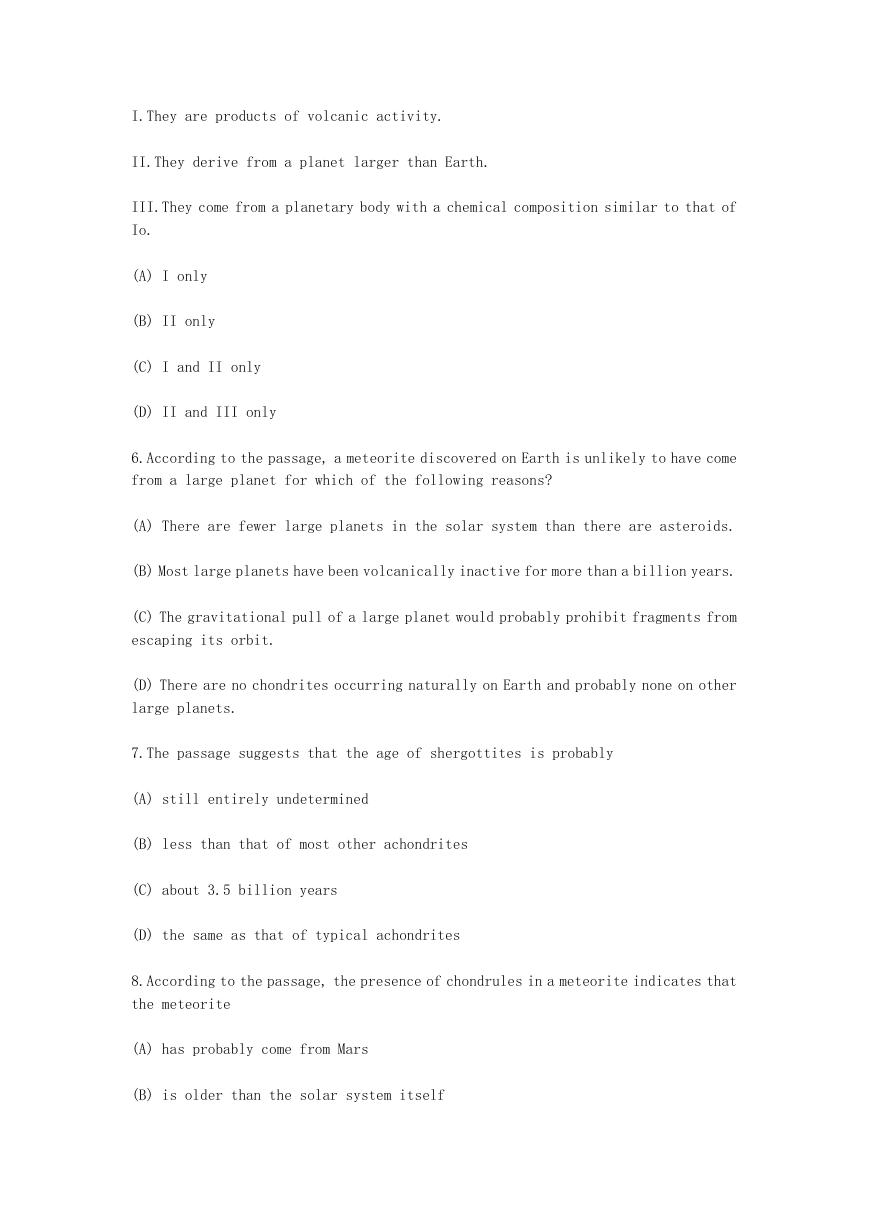

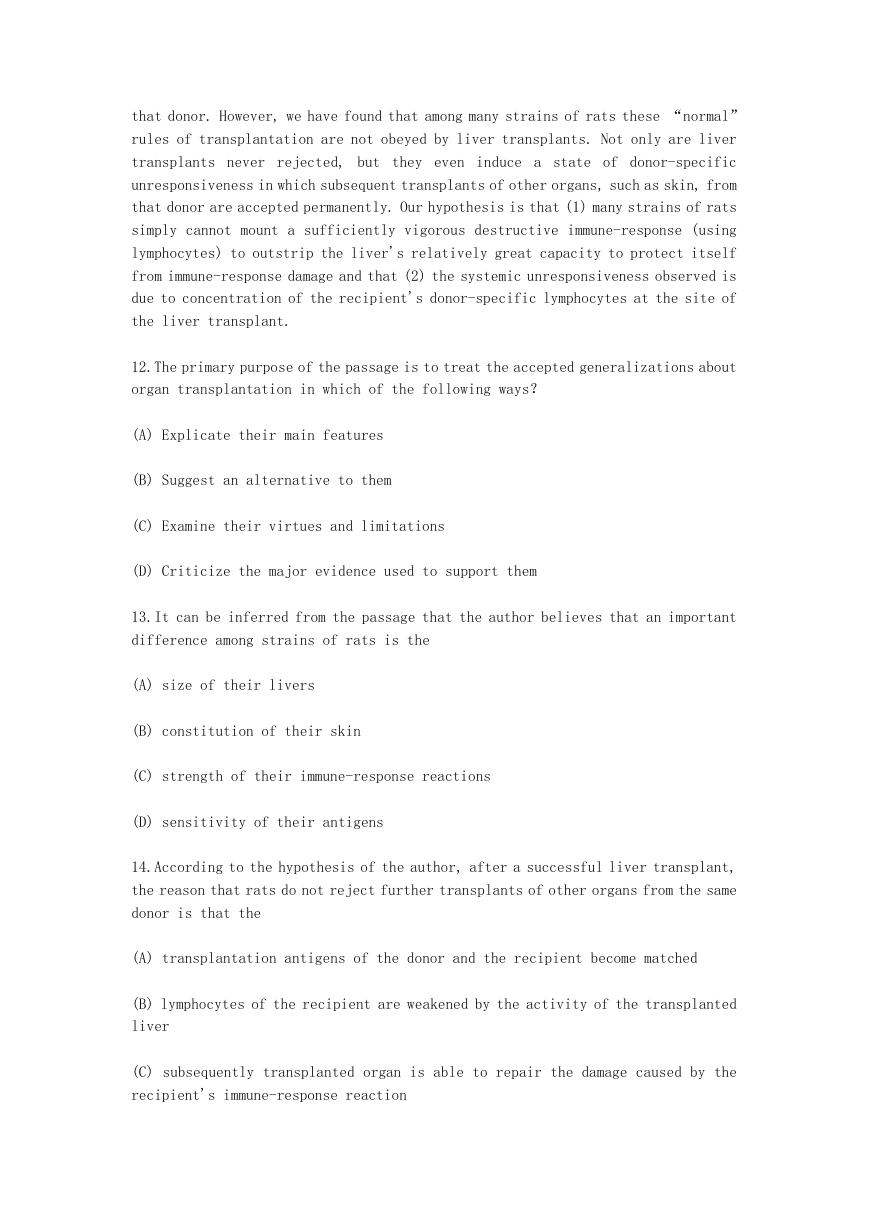
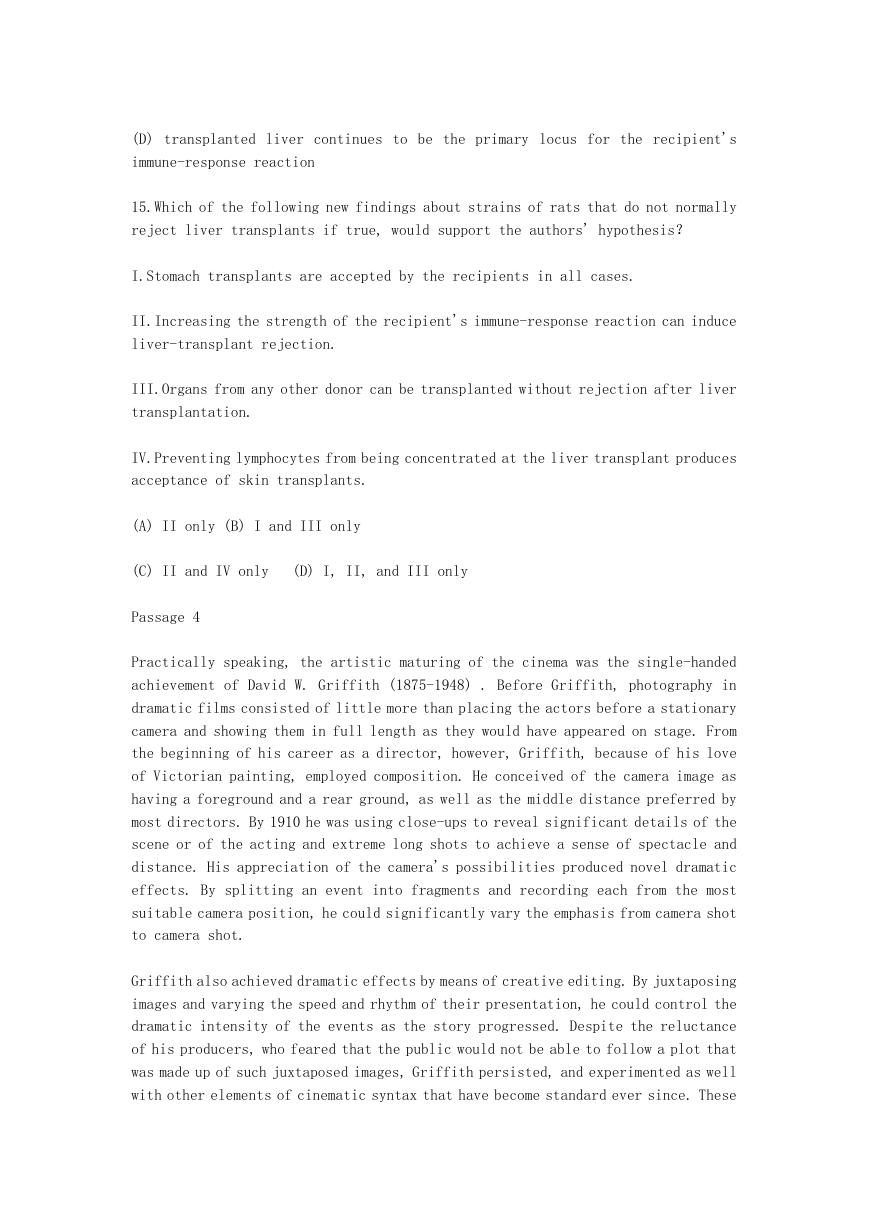
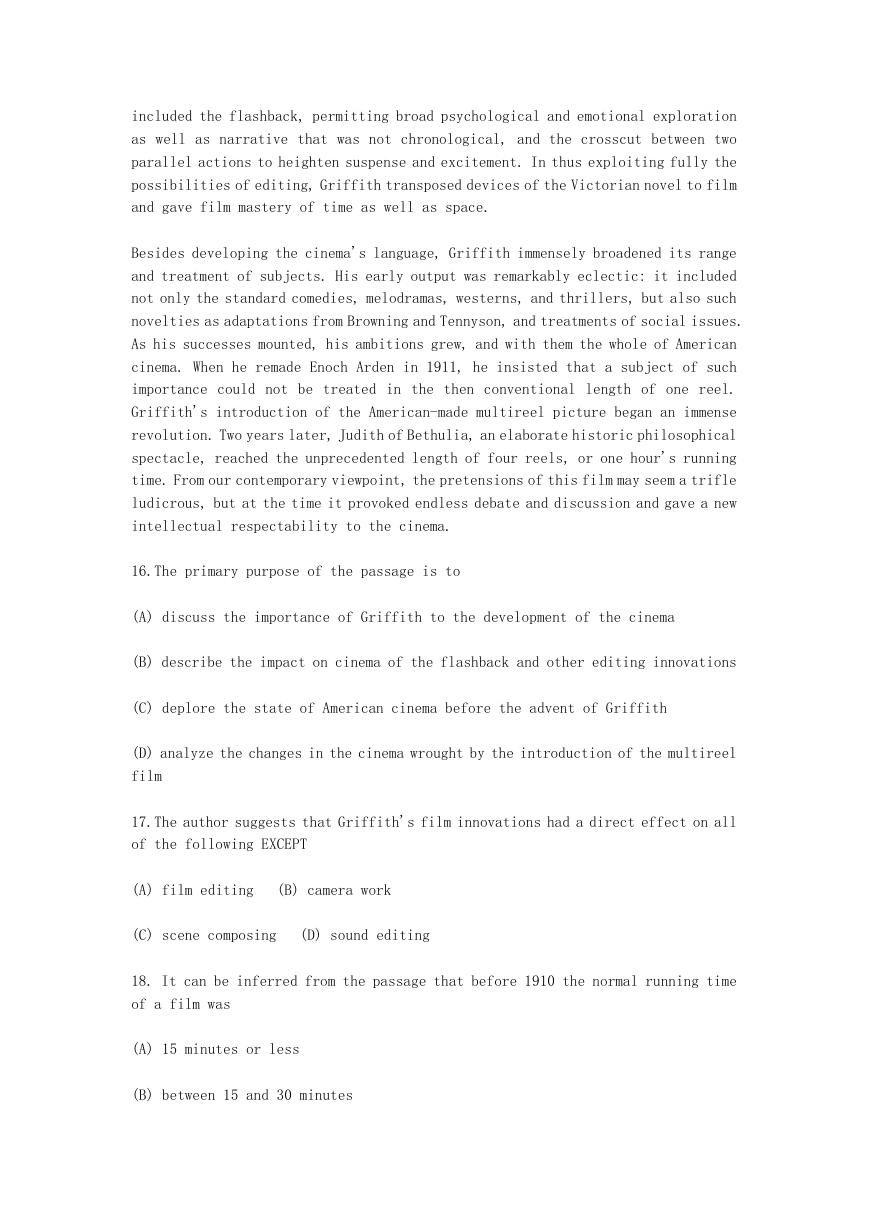








 2023年江西萍乡中考道德与法治真题及答案.doc
2023年江西萍乡中考道德与法治真题及答案.doc 2012年重庆南川中考生物真题及答案.doc
2012年重庆南川中考生物真题及答案.doc 2013年江西师范大学地理学综合及文艺理论基础考研真题.doc
2013年江西师范大学地理学综合及文艺理论基础考研真题.doc 2020年四川甘孜小升初语文真题及答案I卷.doc
2020年四川甘孜小升初语文真题及答案I卷.doc 2020年注册岩土工程师专业基础考试真题及答案.doc
2020年注册岩土工程师专业基础考试真题及答案.doc 2023-2024学年福建省厦门市九年级上学期数学月考试题及答案.doc
2023-2024学年福建省厦门市九年级上学期数学月考试题及答案.doc 2021-2022学年辽宁省沈阳市大东区九年级上学期语文期末试题及答案.doc
2021-2022学年辽宁省沈阳市大东区九年级上学期语文期末试题及答案.doc 2022-2023学年北京东城区初三第一学期物理期末试卷及答案.doc
2022-2023学年北京东城区初三第一学期物理期末试卷及答案.doc 2018上半年江西教师资格初中地理学科知识与教学能力真题及答案.doc
2018上半年江西教师资格初中地理学科知识与教学能力真题及答案.doc 2012年河北国家公务员申论考试真题及答案-省级.doc
2012年河北国家公务员申论考试真题及答案-省级.doc 2020-2021学年江苏省扬州市江都区邵樊片九年级上学期数学第一次质量检测试题及答案.doc
2020-2021学年江苏省扬州市江都区邵樊片九年级上学期数学第一次质量检测试题及答案.doc 2022下半年黑龙江教师资格证中学综合素质真题及答案.doc
2022下半年黑龙江教师资格证中学综合素质真题及答案.doc